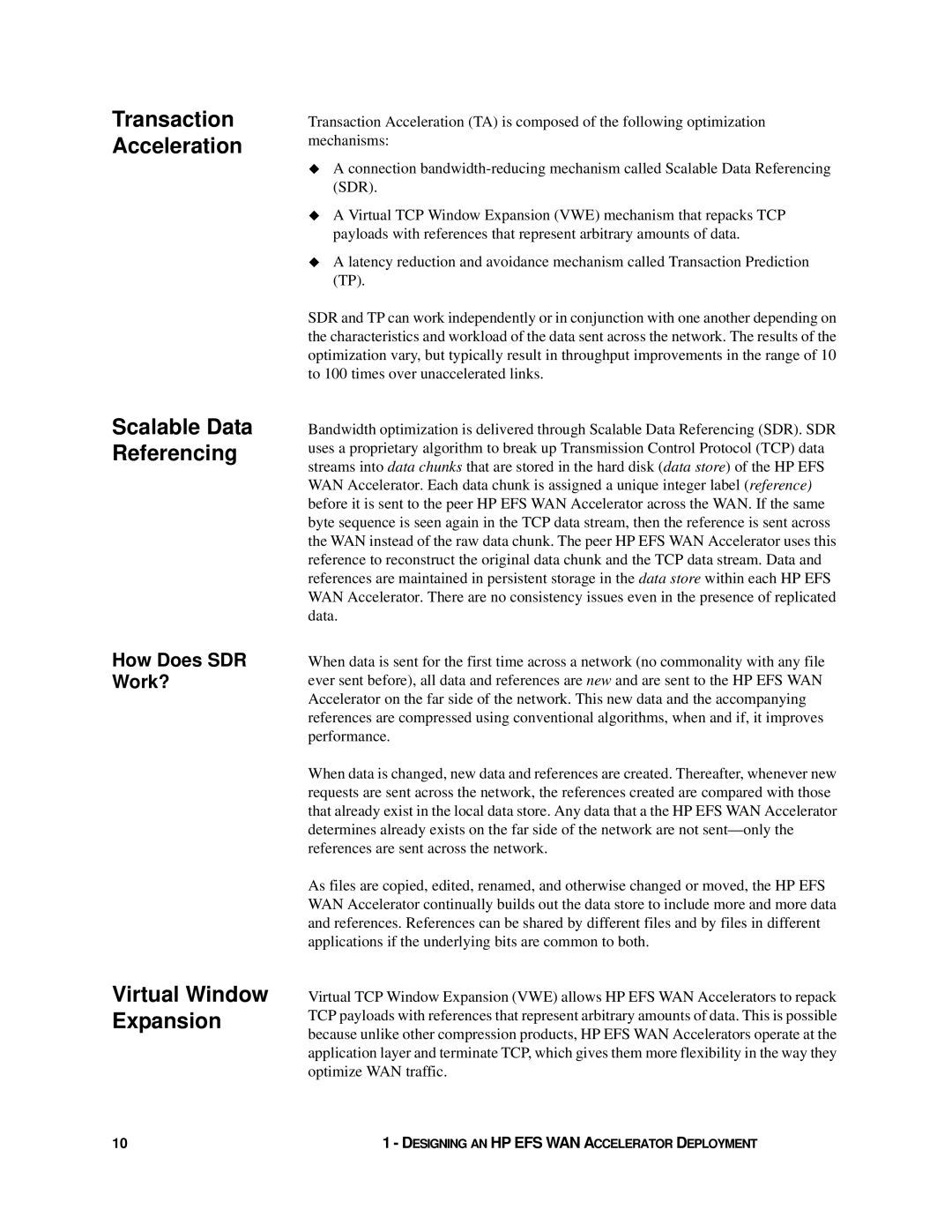Transaction Acceleration
Scalable Data Referencing
How Does SDR Work?
Virtual Window Expansion
10
Transaction Acceleration (TA) is composed of the following optimization mechanisms:
A connection
A Virtual TCP Window Expansion (VWE) mechanism that repacks TCP payloads with references that represent arbitrary amounts of data.
A latency reduction and avoidance mechanism called Transaction Prediction (TP).
SDR and TP can work independently or in conjunction with one another depending on the characteristics and workload of the data sent across the network. The results of the optimization vary, but typically result in throughput improvements in the range of 10 to 100 times over unaccelerated links.
Bandwidth optimization is delivered through Scalable Data Referencing (SDR). SDR uses a proprietary algorithm to break up Transmission Control Protocol (TCP) data streams into data chunks that are stored in the hard disk (data store) of the HP EFS WAN Accelerator. Each data chunk is assigned a unique integer label (reference) before it is sent to the peer HP EFS WAN Accelerator across the WAN. If the same byte sequence is seen again in the TCP data stream, then the reference is sent across the WAN instead of the raw data chunk. The peer HP EFS WAN Accelerator uses this reference to reconstruct the original data chunk and the TCP data stream. Data and references are maintained in persistent storage in the data store within each HP EFS WAN Accelerator. There are no consistency issues even in the presence of replicated data.
When data is sent for the first time across a network (no commonality with any file ever sent before), all data and references are new and are sent to the HP EFS WAN Accelerator on the far side of the network. This new data and the accompanying references are compressed using conventional algorithms, when and if, it improves performance.
When data is changed, new data and references are created. Thereafter, whenever new requests are sent across the network, the references created are compared with those that already exist in the local data store. Any data that a the HP EFS WAN Accelerator determines already exists on the far side of the network are not
As files are copied, edited, renamed, and otherwise changed or moved, the HP EFS WAN Accelerator continually builds out the data store to include more and more data and references. References can be shared by different files and by files in different applications if the underlying bits are common to both.
Virtual TCP Window Expansion (VWE) allows HP EFS WAN Accelerators to repack TCP payloads with references that represent arbitrary amounts of data. This is possible because unlike other compression products, HP EFS WAN Accelerators operate at the application layer and terminate TCP, which gives them more flexibility in the way they optimize WAN traffic.
1 - DESIGNING AN HP EFS WAN ACCELERATOR DEPLOYMENT
